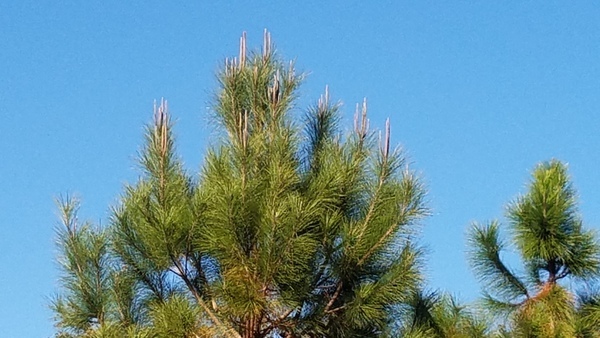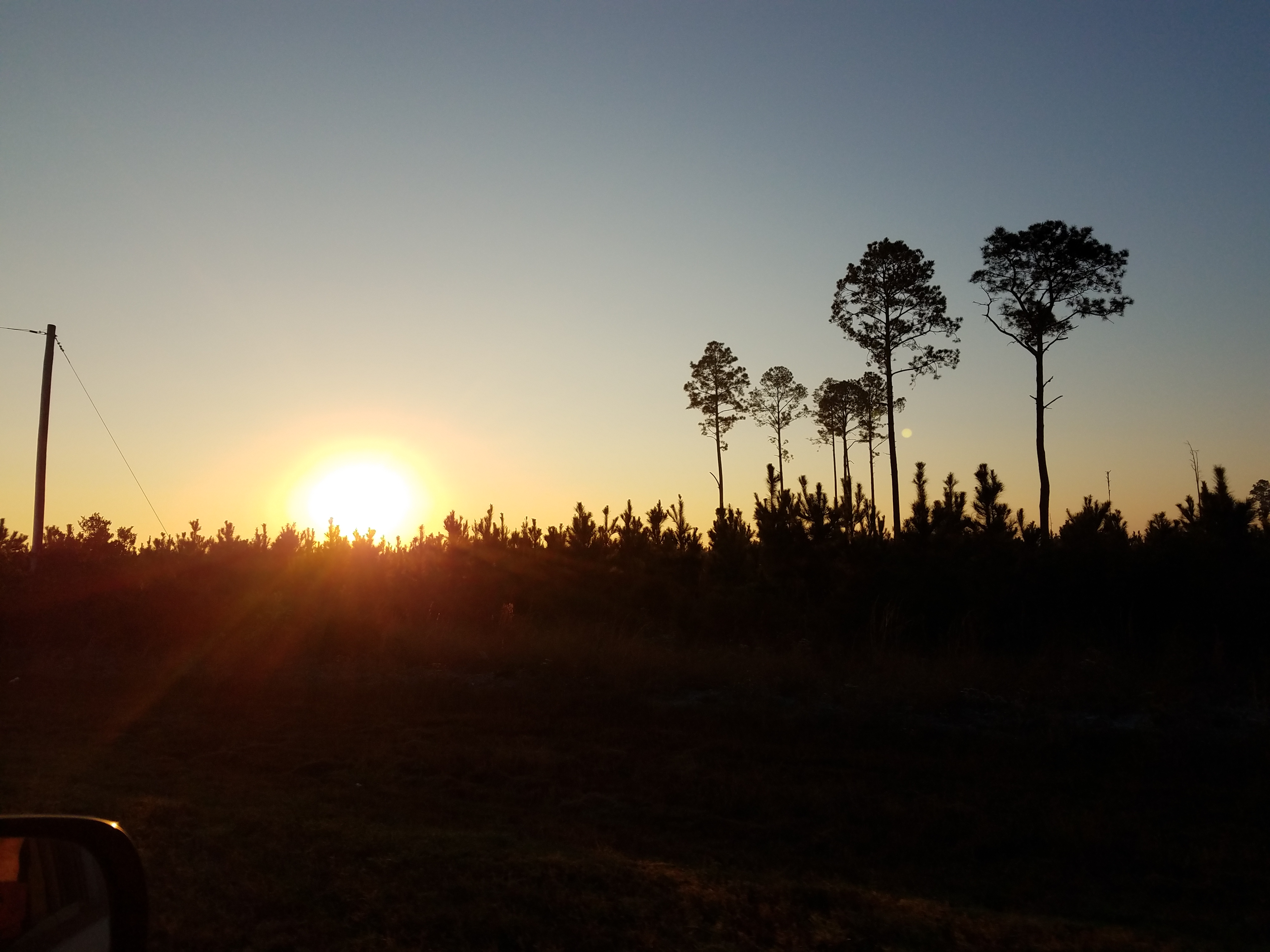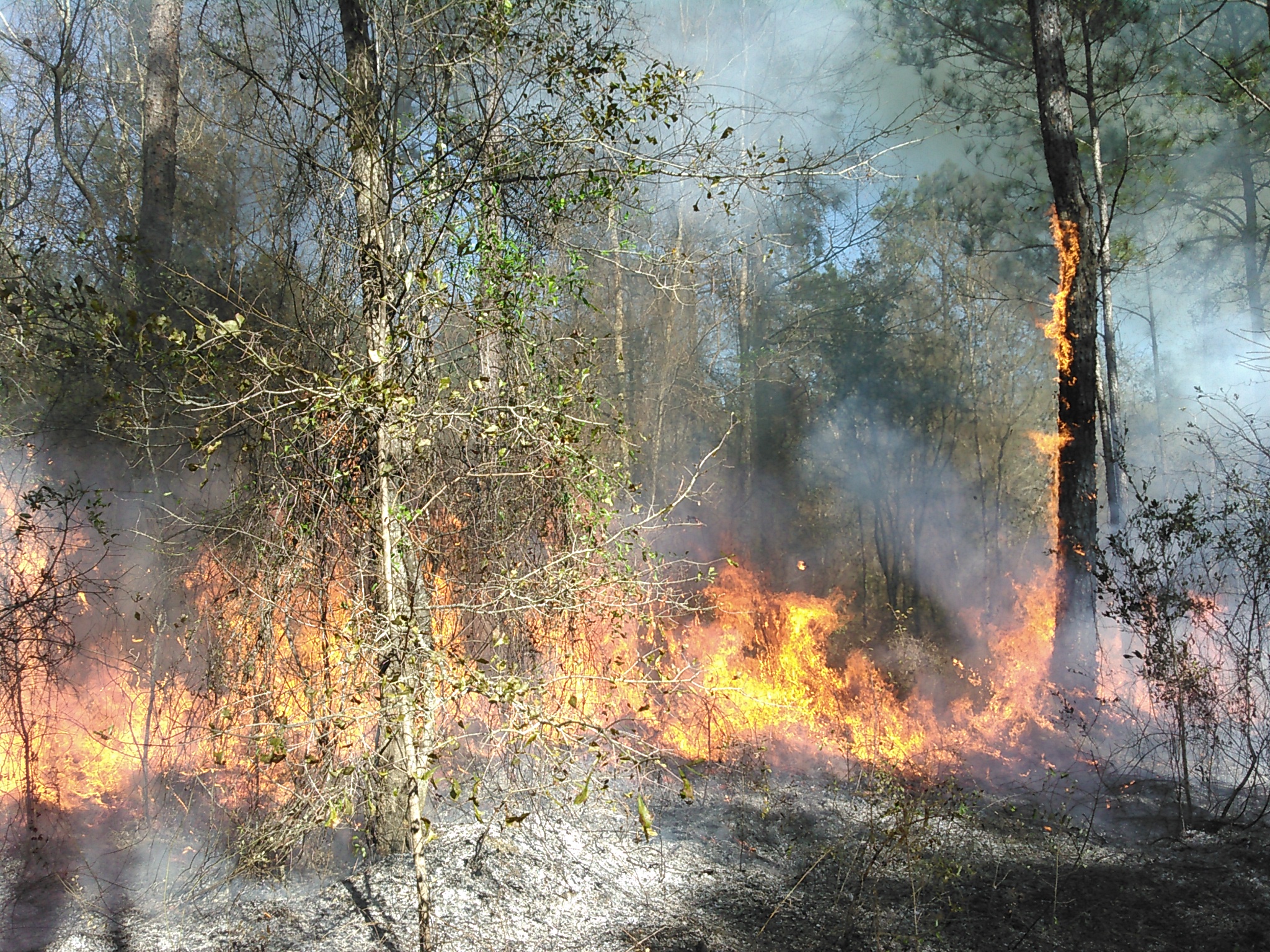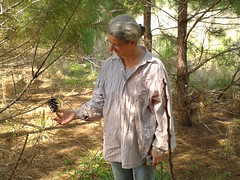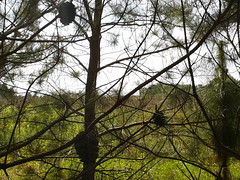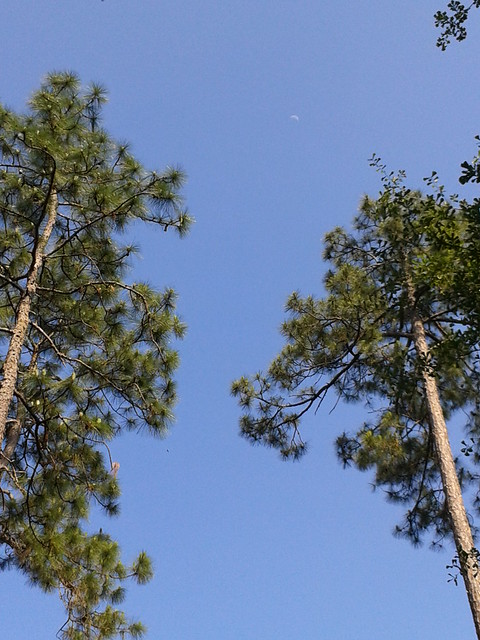Down the Not A Driveway, over and under the Hurricane Helene deadfalls, following the dog pack, lies an acre of wild azaleas, plus wild blueberries.
![[Blondie, Honeybun, Sky, River, over the deadfall into the wild azaleas]](http://www.okraparadisefarms.com/pictures/2025-03-20--wild-azaleas-blueberries/20250320_181727.jpg)
Blondie, Honeybun, Sky, River, over the deadfall into the wild azaleas
Some of these Rhododendron canescens are already blooming. Many more are just budding.
![[Wild azaleas, pine deadfall, and dog on Not A Driveway]](http://www.okraparadisefarms.com/pictures/2025-03-20--wild-azaleas-blueberries/20250320_181536.jpg)
Wild azaleas, pine deadfall, and dog on Not A Driveway
![[Wild azaleas and loblolly pine cones]](http://www.okraparadisefarms.com/pictures/2025-03-20--wild-azaleas-blueberries/20250320_181643.jpg)
Wild azaleas and loblolly pine cones
![[Wild azalea beneath oak deadfall]](http://www.okraparadisefarms.com/pictures/2025-03-20--wild-azaleas-blueberries/20250320_185335.jpg)
Wild azalea beneath oak deadfall
![[Closeup wild azalea beneath oak deadfall]](http://www.okraparadisefarms.com/pictures/2025-03-20--wild-azaleas-blueberries/20250320_185332.jpg)
Closeup wild azalea beneath oak deadfall
“Here Spring was already busy about them: fronds pierced moss and mould,
… small flowers were opening in the turf, birds were
singing. Ithilien, the garden of Gondor now desolate kept still a dishevelled dryad loveliness.”
—Of Herbs and Stewed Rabbit, The Two Towers, JRR Tolkien
-jsq
![[Closeup red wild azaleas]](http://www.okraparadisefarms.com/pictures/2025-03-20--wild-azaleas-blueberries/20250320_181754.jpg)
![[Wild Blueberries]](http://www.okraparadisefarms.com/pictures/2025-03-20--wild-azaleas-blueberries/20250320_182132.jpg)
![[Pink wild azaleas]](http://www.okraparadisefarms.com/pictures/2025-03-20--wild-azaleas-blueberries/20250320_182213.jpg)
![[Pale wild azaleas]](http://www.okraparadisefarms.com/pictures/2025-03-20--wild-azaleas-blueberries/20250320_182158.jpg)
![[Catface burning, Turpentine guide, Nail that held the cup, the loblolly pine tree]](http://www.okraparadisefarms.com/pictures/2023-12-22--afterburn/many.jpg)
![[Fire and ash 2022-12-30]](http://www.okraparadisefarms.com/pictures/2022-12-30--fire/many.jpg)
![[Night, dusk, start]](http://www.okraparadisefarms.com/pictures/2021-03-11--fire-swamp/many.jpg)
![[Yellow jessamine, loblolly, longleaf]](http://www.okraparadisefarms.com/pictures/2021-03-06--pine-pollen-yellow-jessamine/many.jpg)
